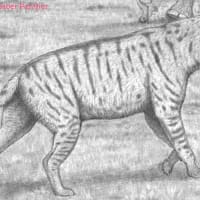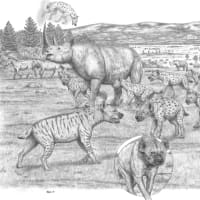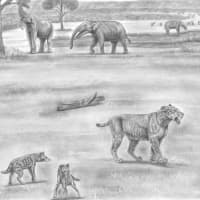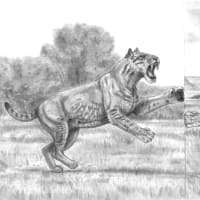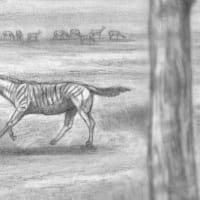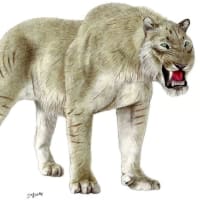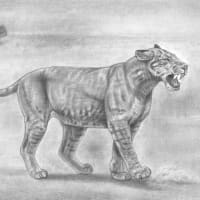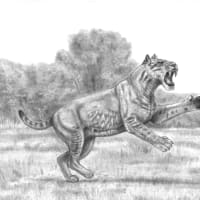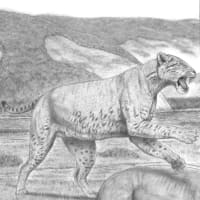From Beardogs to Arctodus : A brief look back on the history of Giant Solitary Caniform Predators, plus Agriotherium's phylogeny
The phylogenetic relationship between Agriotherium and Indarctos, short faced, long limbed carnivorous bears of the Mio-Pliocene may have to be revised, since the genus Indarctos, traditionally considered to have been ancestral to Agriotherium, is now being placed within Ailuropodinae(relatives of the panda) by several recent phylogenetic analyses. In addition, Agriotherium itself is considered not a part of the subfamily Ailuropodinae but that of Hemicyoninae, a strange group of beardog morphotypes in a 2019 paper(Abella et al., 'The last record of an ailuropod bear from the Iberian Peninsula', 2019) that reports the youngest Indarctos remains yet discovered in Europe.
Before the advent of Indarctos-Agriotherium bears, dominant large carnivoran guild in the Old World and the New World alike, was predominantly represented by 'beardog morphotypes' of caniform Amphicyonids and Hemicyonines(plus feliform sabertoothed cat Amphimachairodus). Even though these two groups were not in the least related to each other(Amphicyonids were basal caniform carnivores while Hemicyonines were a variant of true bears), morphological affinities observed between these groups, especially regarding larger species were almost uncanny ; a large dog-like skull, teeth that were well adapted to both tearing and bone crushing, relatively long, digitigraded swift limbs that were somehow being 'offset' by a massive bear-ish body frame(some species of Amphicyon and Pseudocyon were getting truly enormous, each weighing well over 450 kg(c.1000 lbs), whereas there existed a number of small to medium sized species in both groups as well) plus a long tail. Such morphological traits of 'beardogs' could be considered plesiomorphic of the suborder caniformia.
Eventually, 'beardog morphotypes'(Amphicyonids and Hemicyonines) were replaced worldwide, by another large caniform predators, the bears of the genera Indarctos and Agriotherium. Aside from a relatively short muzzle and plantigrady typical of Indarctos and Agriotherium, these bears and beardogs nonetheless shared a good amount of similarities such as slightly elongated, swift limbs, more carnivorous dentition excelled at both tearing and bone crushing, a large body frame etc. Feeding ecologies and occupying niches might also be similar between these dominant caniform carnivores.
Assuming Abella et al.(2019) is correct about the new Agriotherium phylogeny, what else can we point regarding morphological similarities between Agriotherium and its supposed relatives hemicyonine bears?
During the Pleistocene in Americas, Agriotherium's legacy still continued in the form of tremarctine giant short faced bears(Arctodus and Arctotherium) who were marked by astonishing morphological affinities and perhaps also similar ecological niches. That was not the case however in the Old World where no such morpho-types of caniform carnivores ever repeated after the demise of Indarctos-Agriotherium. What could be the reason behind it do you think?
Will morphotypes of the beardog or the giant short faced bear ever appear again?
In relation to that, I'm much interested in giant beardogs' capability as solitary super predator, focusing here particularly on their ability to hunt big game, in comparison with, say some biggest big cats or biggest sabertoothed cats. For instance, what would have been their typical and maximum possible prey sizes like?
~ ©the Saber panther










